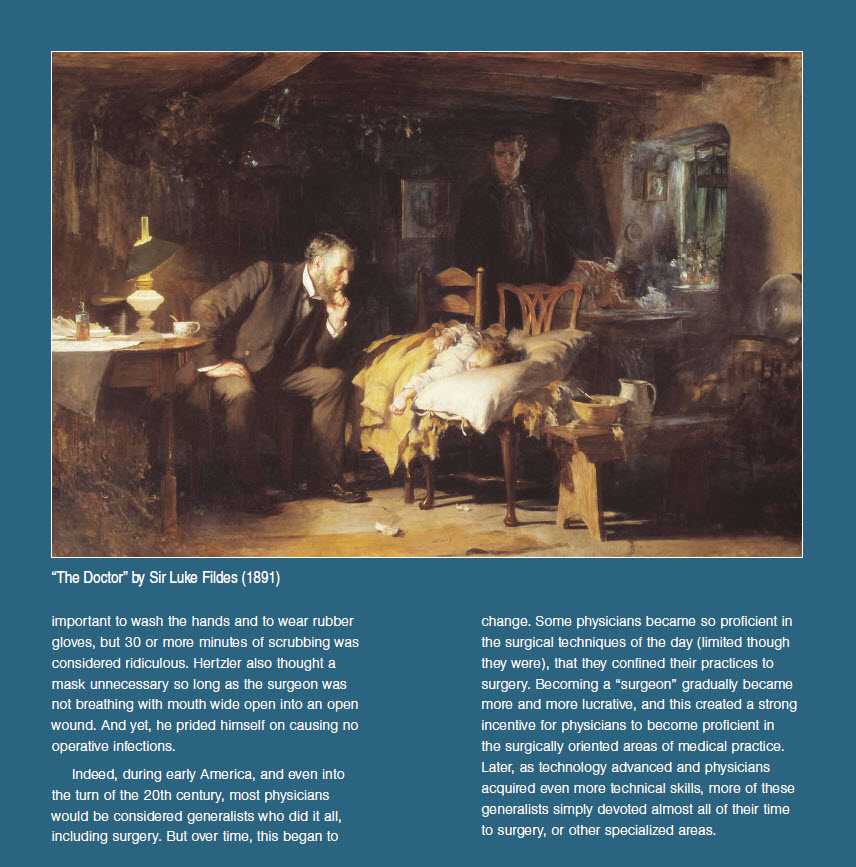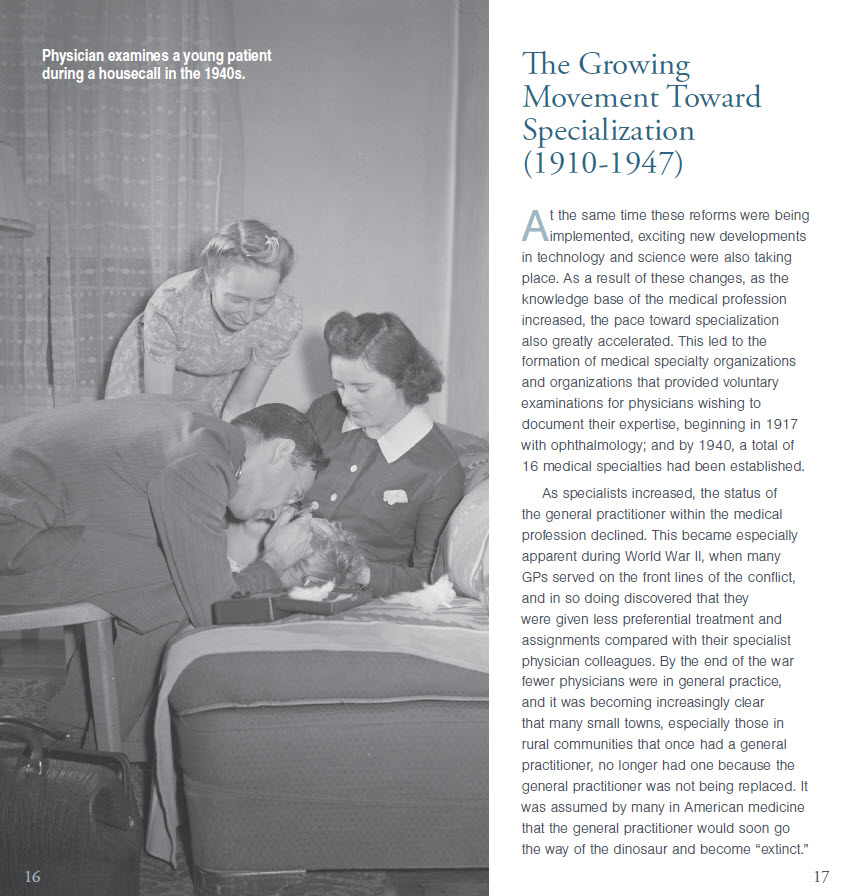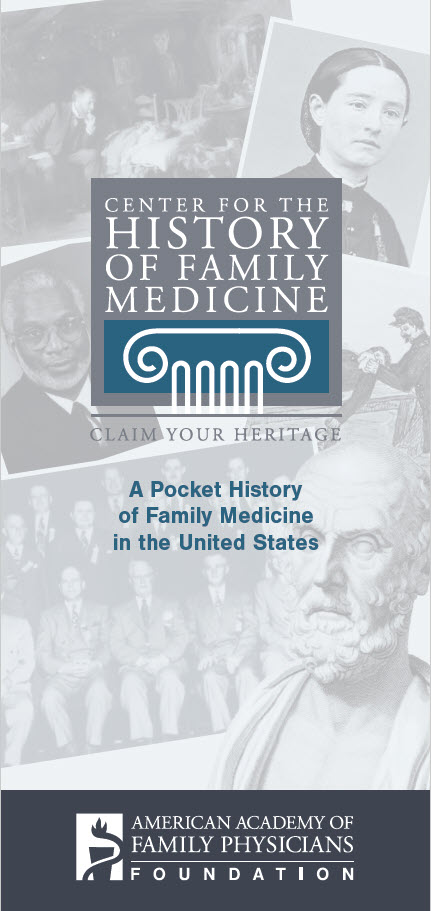With generous support provided by gifts from the Franciscan Health Indianapolis Family Medicine Residency and Eli Lilly and Company, the Center for the History of Family Medicine (CHFM) created a new publication, entitled A Pocket History of Family Medicine in the United States.
Throughout every era of U.S. history, general practitioners (GPs) and family physicians (FPs) have been on the front lines of the American health care system. Family medicine practitioners were signers of both the Declaration of Independence and the Constitution, have served as governors, cabinet members, and congressmen; two have even served as U.S. surgeons general.
The Pocket History is intended as a reminder of the important role family physicians have played as the champions of health care through U.S. history.
Colorful and richly illustrated, the small (8 ½” x 4”) 36-page “pocket” size booklet is designed to give a brief history of the specialty to family physicians, students, residents, and members of the public to help educate them on the history and evolution of family medicine.


Donate to the CHFM Endowment and Take a Little History with You
The Pocket History is a great learning tool for medical students―and a great reminder to family physicians―of the proud legacy and heritage of the specialty.
Copies of the Pocket History are available for a suggested donation of twenty-five dollars to the American Academy of Family Physicians Foundation. All proceeds go to the CHFM Endowment. The CHFM Endowment, a long-term growth fund, was established in 1998 with the goal of establishing the Center as a permanently self-supporting and self-sustaining entity within family medicine.
